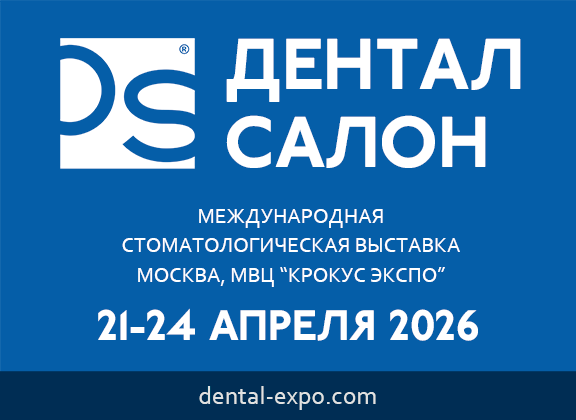DOI:
10.37988/1811-153X_2022_4_50Clinical cases of autotransplantation of retained dystopian premolars
Downloads
Abstract
According to different authors, the prevalence of tooth impaction varies from 4 to 28.3%, while the canines and third molars are most often affected by anomalies. Impacted premolars occur in the range of 0.11—3.2%, which leads to orthodontic and aesthetic disorders. One of the possible solutions to the problem may be autotransplantation of impacted tooth into a surgically prepared bed. The aim of study was to evaluate the effectiveness of the autotransplantation technique of impacted formed premolars in the dentition. >. The publication describes two cases of autotransplantation of impacted second premolars in adult patients and their placement in the dental arch. Under local anesthesia, atraumatic removal of the second premolar was performed and its installation in a surgically prepared hole, the wound was sutured. After 2 to 3 weeks, endodontic treatment of the transplanted tooth was performed. >. The postoperative period passed without complications. Since communication with patients after treatment was lost for subjective reasons, intermediate control visits were not carried out. However, 2 years after the surgical intervention, no pathological changes were detected in the area of the operation. >. Our clinical cases demonstrate the possibility of surgical treatment of dental impaction. The method is quite simple and low-traumatic, which allows, if you have certain skills, to use it at an outpatient dental appointment.Key words:
autotransplantation, impaction, premolarsFor Citation
[1]
Gasparyan K.K., Volobuev V.V., Kapitan M.S., Voskanyan A.R., Lovlin V.N., Mosesova A.S., Parshkova T.A. Clinical cases of autotransplantation of retained dystopian premolars. Clinical Dentistry (Russia). 2022; 25 (4): 50—54. DOI: 10.37988/1811-153X_2022_4_50
References
- Ayupova F.S., Gasparyan K.K. Clinical roentgenological diagnostics and treatment results in children complete permanent and supplemental teeth dental retention. Pediatric Dentistry and Profilaxis. 2015; 2 (53): 10—14 (In Russ.). eLIBRARY ID: 24346480
- Vakushina E.A., Bragin A.E., Grigorenko P.A., Bragin S.E. Detection of gnathological triad index in patients with retention of permanent teeth by modern diagnostic methods. Medical News of North Caucasus. 2013; 1: 42—44 (In Russ.). eLIBRARY ID: 18930206
- Şimşek-Kaya G., Melih-Ömezli M., Yapici G., Dayi E., Ertaş U. Prevalence of impacted premolars in a Turkish population and considerations for surgical treatment. Med Oral Patol Oral Cir Bucal. 2011; 16 (6): e781—6. PMID: 21196868
- Alberto P.L. Surgical exposure of impacted teeth. Oral Maxillofac Surg Clin North Am. 2020; 32 (4): 561—570. PMID: 32912779
- Ezirganli S., Kirtay M., Ozer K., Un E.C., Kosger H.H, Kazancioglu H.O. The prevalence of impacted premolars in the Anatolian population. Bezmialem Science. 2013; 1: 28—32. DOI: 10.14235/bs.2014.1413
- Liu R.R., Tian J. [Current situation of clinical research on impacted premolars]. Hua Xi Kou Qiang Yi Xue Za Zhi. 2018; 36 (2): 215—219 (In Chinese). PMID: 29779287
- Mitropanova M.N., Verapatveljan A.F., Gasparjan K.K., Mosesova A.S., Miroshnikova M.S. The experience of surgical elimination of the dystopia of the rudiment of the permanent tooth. Clinical Dentistry (Russia). 2018; 2 (86): 34—36 (In Russ.). eLIBRARY ID: 35154626
- Almpani K., Papageorgiou S.N., Papadopoulos M.A. Autotransplantation of teeth in humans: a systematic review and meta-analysis. Clin Oral Investig. 2015; 19 (6): 1157—79. PMID: 25903060
- Plotino G., Abella Sans F., Duggal M.S., Grande N.M., Krastl G., Nagendrababu V., Gambarini G. Present status and future directions: Surgical extrusion, intentional replantation and tooth autotransplantation. Int Endod J. 2022; 55 Suppl 3: 827—842. PMID: 35279858
- Singh A.K., Khanal N., Acharya N., Hasan M.R., Saito T. What are the complications, success and survival rates for autotransplanted teeth? An overview of systematic reviews and metanalyses. Healthcare (Basel). 2022; 10 (5): 835. PMID: 35627972
- Díaz J.A., Jans G.A., Zaror C.E. Long-term evaluation and clinical outcomes of children with dental transplants in Temuco city, Chile. Eur J Paediatr Dent. 2014; 15 (1): 6—12. PMID: 24745585
- Abela S., Murtadha L., Bister D., Andiappan M., Kwok J. Survival probability of dental autotransplantation of 366 teeth over 34 years within a hospital setting in the United Kingdom. Eur J Orthod. 2019; 41 (5): 551—556. PMID: 31144709
- Atala-Acevedo C., Abarca J., Martínez-Zapata M.J., Díaz J., Olate S., Zaror C. Success Rate of Autotransplantation of Teeth With an Open Apex: Systematic Review and Meta-Analysis. J Oral Maxillofac Surg. 2017; 75 (1): 35—50. PMID: 27725103
- Chung W.C., Tu Y.K., Lin Y.H., Lu H.K. Outcomes of autotransplanted teeth with complete root formation: a systematic review and meta-analysis. J Clin Periodontol. 2014; 41 (4): 412—23. PMID: 24393101
- Mensink G., van Merkesteyn R. Autotransplantation of premolars. Br Dent J. 2010; 208 (3): 109—11. PMID: 20147924
Downloads
Received
September 8, 2022
Accepted
October 20, 2022
Published on
December 21, 2022










